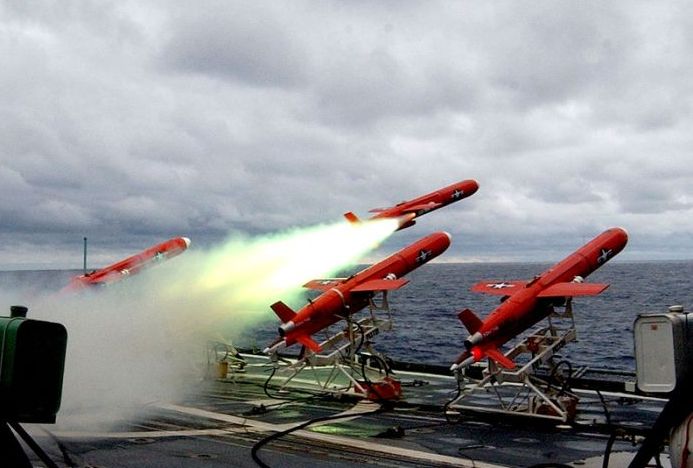|
|
Unmanned Aerial Vehicle (UAV)
|
The military role of unmanned aircraft systems is growing at unprecedented rates. In 2005, tactical- and theater-level unmanned aircraft alone had flown over 100,000 flight hours in support of Operation Enduring Freedom and Operation Iraqi Freedom, in which they are organized under Task Force Liberty in Afghanistan and Task Force ODIN in Iraq. Rapid advances in technology are enabling more and more capability to be placed on smaller airframes which is spurring a large increase in the number of Small Unmanned Aircraft Systems (SUAS) being deployed on the battlefield. The use of SUAS in combat is so new that no formal DoD wide reporting procedures have been established to track SUAS flight hours. As the capabilities grow for all types of UAS, nations continue to subsidize their research and development leading to further advances enabling them to perform a multitude of missions. UAS no longer only perform intelligence, surveillance, and reconnaissance missions, although this still remains their predominant type. Their roles have expanded to areas including electronic attack, strike missions, suppression and/or destruction of enemy air defense, network node or communications relay, combat search and rescue, and derivations of these themes. These UAS range in cost from a few thousand dollars to tens of millions of dollars, with aircraft ranging from less than one pound to over 40,000 pounds.
When the Obama administration announced in December 2009 the deployment of 30,000 new troops in Afghanistan, there was already an increase of attacks by pilotless Predator drones against Taliban and Al Qaeda militants in Afghanistan and Pakistan's tribal areas, of which one probably killed a key member of Al Qaeda. However, neither Osama bin Laden nor Ayman al-Zawahiri was the likely target, according to reports. According to a report of the New America Foundation, armed drone strikes had dramatically increased under President Obama – even before his deployment decision. There were 43 such attacks between January and October 2009. The report draws on what it deems to be "credible" local and national media stories about the attacks. That compared with a total of 34 in all of 2008, President Bush’s last full year in office. Since 2006, drone-launched missiles allegedly had killed between 750 and 1,000 people in Pakistan, according to the report. Of these, about 20 people were said to be leaders of Al Qaeda, Taliban, and associated groups. Overall, 66% to 68% of the people killed were militants, and 31% to 33% were civilians. US officials disputed the percentage for civilians. The U.S. Air Force has recently begun referring at least to larger UAS like Predator, Reaper, and Global Hawk as Remotely Piloted Aircraft (RPA), to highlight the fact that these systems are always controlled by a human operator at some location.
|
|









